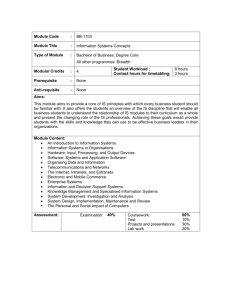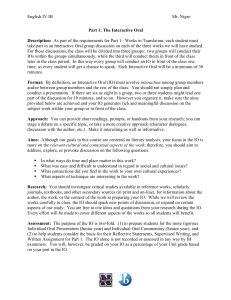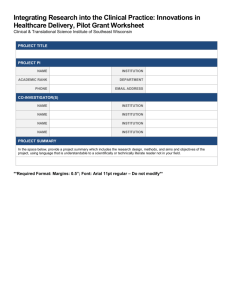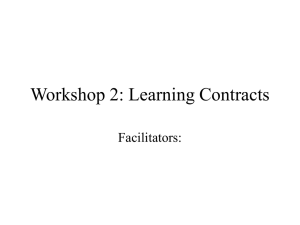Integration/Application
advertisement
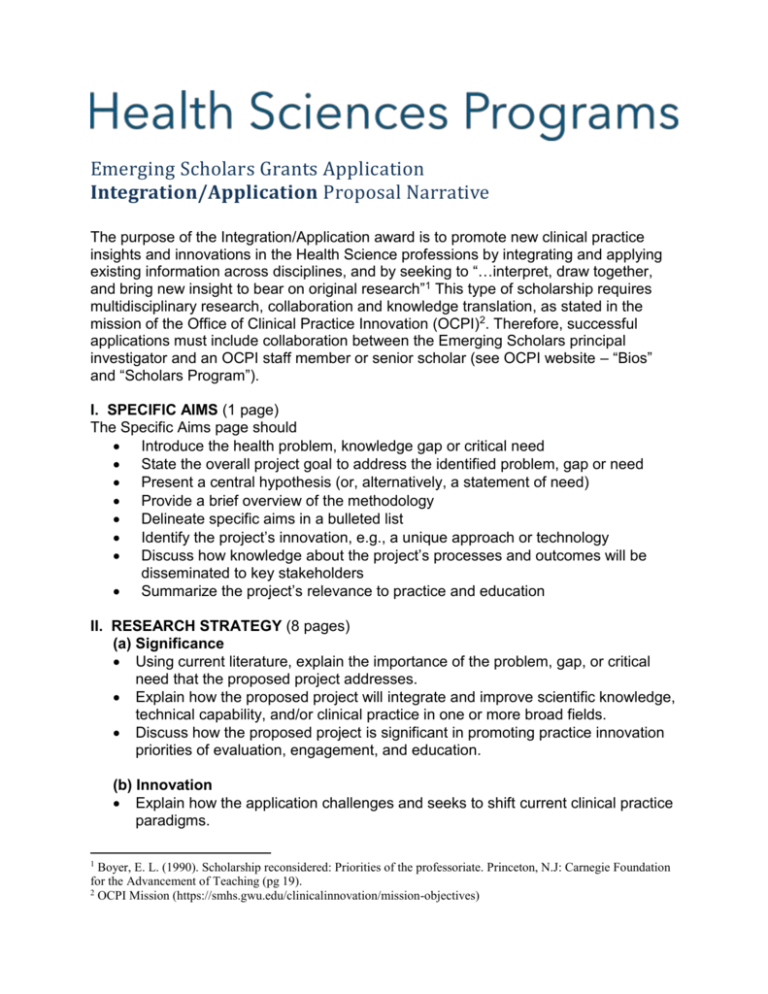
Emerging Scholars Grants Application Integration/Application Proposal Narrative The purpose of the Integration/Application award is to promote new clinical practice insights and innovations in the Health Science professions by integrating and applying existing information across disciplines, and by seeking to “…interpret, draw together, and bring new insight to bear on original research”1 This type of scholarship requires multidisciplinary research, collaboration and knowledge translation, as stated in the mission of the Office of Clinical Practice Innovation (OCPI)2. Therefore, successful applications must include collaboration between the Emerging Scholars principal investigator and an OCPI staff member or senior scholar (see OCPI website – “Bios” and “Scholars Program”). I. SPECIFIC AIMS (1 page) The Specific Aims page should Introduce the health problem, knowledge gap or critical need State the overall project goal to address the identified problem, gap or need Present a central hypothesis (or, alternatively, a statement of need) Provide a brief overview of the methodology Delineate specific aims in a bulleted list Identify the project’s innovation, e.g., a unique approach or technology Discuss how knowledge about the project’s processes and outcomes will be disseminated to key stakeholders Summarize the project’s relevance to practice and education II. RESEARCH STRATEGY (8 pages) (a) Significance Using current literature, explain the importance of the problem, gap, or critical need that the proposed project addresses. Explain how the proposed project will integrate and improve scientific knowledge, technical capability, and/or clinical practice in one or more broad fields. Discuss how the proposed project is significant in promoting practice innovation priorities of evaluation, engagement, and education. (b) Innovation Explain how the application challenges and seeks to shift current clinical practice paradigms. 1 Boyer, E. L. (1990). Scholarship reconsidered: Priorities of the professoriate. Princeton, N.J: Carnegie Foundation for the Advancement of Teaching (pg 19). 2 OCPI Mission (https://smhs.gwu.edu/clinicalinnovation/mission-objectives) Explain any refinements, improvements, integration, or new applications of theoretical concepts, approaches or methodologies, instrumentation or interventions. (c) Approach • Describe the overall strategy, methodology, and analyses to be used to accomplish the specific aims of the project. Describe specifically how the data will be collected, managed, analyzed, and interpreted. • Discuss potential problems, alternative strategies, and benchmarks for success anticipated to achieve the aims. • Describe the strategy you will use to establish feasibility, and address the management of any high risk aspects of the proposed work. Point out any procedures, situations, or materials that may be hazardous to personnel and precautions to be exercised. (d) Translation Describe how this information will be disseminated to other professionals, both internal and external to GW. Discuss how this project can be leveraged to promote future research collaborations. III. PRELIMINARY WORK (1 page) IV. MONTH-BY-MONTH PROJECT TIMELINE (1 page) – include the following headings: Project Month: Task Potential Barrier(s) to Accomplishing Task Plan for Overcoming Potential Barrier(s) V. REFERENCES (not counted in the page limit) VI. PRINCIPAL INVESTIGATOR(S) BIOGRAPHICAL STATEMENT (not counted in page limit) Describe your long-term research or career goal(s). Explain your rationale for pursuing the project. o Indicate what will be possible to accomplish when your research is complete. Describe your qualifications and research environment. o How you are better prepared than other, equally qualified researchers. o Identify special training, expertise, experience, and, most importantly, relevant preliminary data. o Identify access to human and animal subject pools; to unique equipment and instrumentation; and to collaborations and partnerships. VII. COLLABORATORS (not counted in the page limit) Name all collaborators and their contribution to the project.


